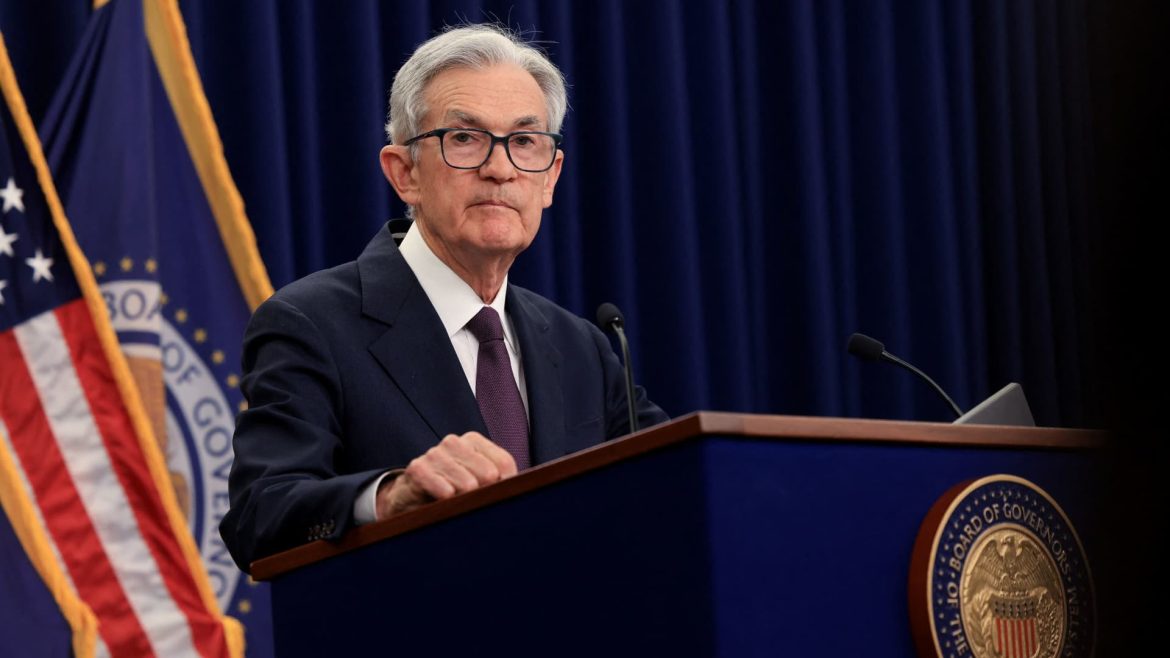The Federal Reserve’s Tightrope Walk: Balancing Independence and Political Pressure
Introduction: The Fed’s Delicate Dance
The Federal Reserve, often regarded as the bastion of economic stability, found itself in a precarious position during a period marked by political pressure, economic uncertainty, and global volatility. With interest rates held steady between 4.25% and 4.5%, the central bank’s decisions were scrutinized not only by economists and market analysts but also by the highest political office in the land. This report explores the Fed’s navigation of these turbulent waters, examining the motivations behind its decisions, the political pressures it faced, and the broader implications for the U.S. economy.
The Fed’s Steady Hand: A Calculated Approach
The Federal Reserve’s decision to maintain steady interest rates was not made lightly. This stance reflected a careful balancing act, aimed at avoiding abrupt shifts that could destabilize the economy. By keeping rates unchanged, the Fed signaled its commitment to a measured approach, allowing the economy to continue its trajectory while closely monitoring key indicators. This decision was particularly significant given the external pressures the Fed was under, demonstrating its resolve to prioritize economic data over political expediency.
Trump’s Pressure Campaign: A Test of Independence
President Donald Trump’s repeated calls for interest rate cuts introduced an unprecedented level of political pressure on the Federal Reserve. Trump’s rationale was rooted in the belief that lower rates would stimulate economic growth, bolster the stock market, and enhance American competitiveness. However, his public statements challenged the Fed’s long-standing tradition of independence, raising questions about the central bank’s ability to resist political interference.
Chairman Jerome Powell’s firm stance in the face of this pressure underscored the importance of the Fed’s autonomy. Powell’s reported refusal to bow to political demands highlighted the central bank’s commitment to its dual mandate of promoting maximum employment and price stability. This clash between the President and the Fed Chair illustrated a fundamental disagreement over the role of monetary policy and the appropriate level of government influence in economic decision-making.
Economic Signals: A Complex Picture
The Fed’s decision-making process was influenced by a myriad of economic signals, each presenting a different facet of the nation’s financial health. While the U.S. economy exhibited strength in areas such as employment and consumer spending, other indicators painted a more cautious picture. Concerns about inflation, global economic slowdown, and trade tensions likely factored into the Fed’s deliberations, leading to a cautious approach that prioritized stability over aggressive action.
The FOMC: Internal Debates and Unity
Behind the scenes, the Federal Open Market Committee (FOMC) grappled with internal divisions as it weighed the appropriate course of action. Comprising 12 voting members, the FOMC included representatives from the Board of Governors and regional Federal Reserve Banks. While the majority appeared to favor maintaining the status quo, dissenting voices advocated for rate cuts, reflecting differing perspectives on the economic outlook and the need for monetary stimulus. These internal debates, though often overlooked, are a crucial part of the policymaking process, ensuring that a range of viewpoints are considered before final decisions are made.
The Global Context: International Influences
The Fed’s decisions were not made in isolation but were influenced by global economic conditions and the policies of other central banks. A global economic slowdown, trade disputes, and currency fluctuations all played a role in shaping the Fed’s thinking. Additionally, the actions of other central banks, such as the European Central Bank (ECB) and the Bank of Japan (BOJ), created a complex web of influences that the Fed had to navigate. This global context underscored the interconnected nature of modern economies and the need for the Fed to consider international factors in its decision-making.
Market Expectations: The Fed’s Dilemma
Financial markets closely tracked the Fed’s every move, attempting to anticipate future policy changes. The fed-funds futures market, a tool used by investors to gauge the direction of interest rates, indicated a significant probability of a rate cut in the future. This market sentiment suggested that investors believed the Fed would eventually be compelled to lower rates, either due to economic weakness or persistent political pressure. The Fed’s challenge was to balance these market expectations with its own economic assessments, avoiding surprises that could disrupt financial stability.
Potential Scenarios: Navigating Uncertainty
Looking ahead, the Fed faced a range of potential scenarios, each with its own set of challenges. If economic growth slowed significantly, the Fed might be forced to cut interest rates to stimulate the economy. Conversely, if inflation surged, the Fed might need to raise rates to maintain price stability. A third scenario involved continued economic uncertainty and political pressure, which could lead the Fed to maintain its steady course while carefully monitoring economic developments. In each case, the Fed’s ability to navigate these uncertainties would be crucial in maintaining economic stability.
Conclusion: The Fed’s Legacy of Independence
The period under review tested the Federal Reserve’s independence and resolve like never before. Despite facing intense political pressure, the central bank remained steadfast in its commitment to its mandate. The Fed’s actions during this time served as a reminder of the importance of its autonomy in safeguarding the integrity of monetary policy and the long-term health of the U.S. economy. The ability to resist political pressure and make decisions based on economic data is not just a testament to the Fed’s independence but also a cornerstone of its effectiveness as the nation’s central bank. As the economy continues to evolve, the Fed’s unwavering commitment to its mandate will remain essential in navigating the challenges ahead.





